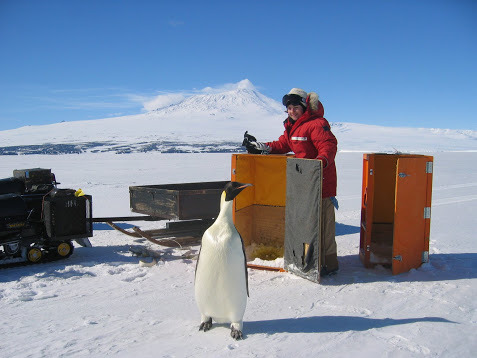I Have Two Moods And They Are Gay And Nervous
i have two moods and they are gay and nervous
More Posts from Dynamic-light-scattering and Others


Get you a girl who can do both

2020 March 25
Star Forming Region S106 Image Credit: NASA, ESA, Hubble Legacy Archive; Processing & Copyright: Utkarsh Mishra
Explanation: Massive star IRS 4 is beginning to spread its wings. Born only about 100,000 years ago, material streaming out from this newborn star has formed the nebula dubbed Sharpless 2-106 Nebula (S106), featured here. A large disk of dust and gas orbiting Infrared Source 4 (IRS 4), visible in brown near the image center, gives the nebula an hourglass or butterfly shape. S106 gas near IRS 4 acts as an emission nebula as it emits light after being ionized, while dust far from IRS 4 reflects light from the central star and so acts as a reflection nebula. Detailed inspection of a relevant infrared image of S106 reveal hundreds of low-mass brown dwarf stars lurking in the nebula’s gas. S106 spans about 2 light-years and lies about 2000 light-years away toward the constellation of the Swan (Cygnus).
∞ Source: apod.nasa.gov/apod/ap200325.html
Meet NASA Astronaut Jessica Meir

Jessica Meir dreamed of the day she would make it to space since the age of five. That dream became a reality on Wednesday, Sept. 25, 2019 as she left Earth on her first spaceflight – later floating into her new home aboard the International Space Station. Jessica lifted off from Kazakhstan in the Soyuz MS-15 spacecraft at 9:57 a.m. EDT (1357 GMT) alongside spaceflight participant Ali Almansoori, the first United Arab Emirates astronaut, and Oleg Skripochka, a Russian cosmonaut.

As an Expedition 61 and 62 crew member, Jessica will spend six months in the vacuum of space – conducting research on a multitude of science investigations and participating in several Human Research Program studies.
While Jessica’s new home is more than 200 miles over the Earth, she is no stranger to extreme environments. She studied penguins in Antarctica and mapped caves in Italy – both of which prepared her for the ultimate extreme environment: space.
Get to know astronaut and scientist, Jessica Meir.
Antarctic Field Researcher

For her Ph.D. research, Jessica studied the diving physiology of marine mammals and birds. Her filed research took her all the way to Antarctica, where she focused on oxygen depletion in diving emperor penguins. Jessica is also an Antarctic diver!
Geese Trainer

Image Credit: UBC Media Relations
Jessica investigated the high‐flying bar-headed goose during her post‐doctoral research at the University of British Columbia. She trained geese to fly in a wind tunnel while obtaining various physiological measurements in reduced oxygen conditions.
Wilderness Survival Expert

In 2013, Jessica was selected as an Astronaut Candidate. While training to be a full-fledged astronaut, she participated in three days of wilderness survival training near Rangeley, Maine, which was the first phase of her intensive astronaut training program.
Mission Control Flight Controller
In our astronaut office, Jessica gained extensive mission control experience, including serving as the Lead Capsule Communicator (CapCom) for Expedition 47, the BEAM (Bigelow expandable module on the International Space Station) mission and an HTV (Japanese Space Agency cargo vehicle) mission. The CapCom is the flight controller that speaks directly to the astronaut crew in space, on behalf of the rest of the Mission Control team.
She’s reconnecting with her best friend… in space!

Following a successful launch to the space station, NASA astronaut Christina Koch tweeted this image of Jessica and the crew on their journey to the orbital lab in a Soyuz spacecraft. Excitement was high as Christina tweeted, “What it looks like from @Space_Station when your best friend achieves her lifelong dream to go to space. Caught the second stage in progress! We can’t wait to welcome you onboard, crew of Soyuz 61!”

We know. #FriendshipGoals.
Follow Jessica on Twitter at @Astro_Jessica and follow the International Space Station on Twitter, Instagram and Facebook to keep up with all the cool stuff happening on our orbital laboratory.
Make sure to follow us on Tumblr for your regular dose of space: http://nasa.tumblr.com
right in front

of her salad

porca miseria

Up for some virtual cloud watching? ☁️
What do you see in Jupiter’s hazy atmosphere?
Our NASA JunoCam mission captured this look at the planet’s thunderous northern region during the spacecraft’s close approach to the planet on Feb. 17, 2020.
Some notable features in this view are the long, thin bands that run through the center of the image from top to bottom. Juno has observed these long streaks since its first close pass by Jupiter in 2016.
Image Credits: Image data: NASA / JPL / SwRI / MSSS Image Processing: Citizen Scientist Eichstädt
Make sure to follow us on Tumblr for your regular dose of space: http://nasa.tumblr.com.
A MARIA HILL






Spider-Man: Far From Home










Best of Brie Larson during Captain Marvel promo.
So Aster truly out there getting her degree in lesbianism before she reunites with Ellie right





WANDAVISION | Episode 9
-
 itsyaboyeric liked this · 2 months ago
itsyaboyeric liked this · 2 months ago -
 thehungry-aesthete reblogged this · 3 months ago
thehungry-aesthete reblogged this · 3 months ago -
 nonbina-ry reblogged this · 3 months ago
nonbina-ry reblogged this · 3 months ago -
 gal-kyrie reblogged this · 3 months ago
gal-kyrie reblogged this · 3 months ago -
 proudman050 liked this · 5 months ago
proudman050 liked this · 5 months ago -
 cozymountains reblogged this · 6 months ago
cozymountains reblogged this · 6 months ago -
 cozymountains liked this · 6 months ago
cozymountains liked this · 6 months ago -
 sillywinnertidalwave liked this · 8 months ago
sillywinnertidalwave liked this · 8 months ago -
 attaboylew reblogged this · 8 months ago
attaboylew reblogged this · 8 months ago -
 perfectlyimperfectmg liked this · 8 months ago
perfectlyimperfectmg liked this · 8 months ago -
 m-e-m-o-r-i-a-e reblogged this · 8 months ago
m-e-m-o-r-i-a-e reblogged this · 8 months ago -
 allweknowofheaven24 reblogged this · 8 months ago
allweknowofheaven24 reblogged this · 8 months ago -
 punk-bxtch reblogged this · 8 months ago
punk-bxtch reblogged this · 8 months ago -
 commonmisery liked this · 8 months ago
commonmisery liked this · 8 months ago -
 itsmysimplelife liked this · 8 months ago
itsmysimplelife liked this · 8 months ago -
 life-en-motion reblogged this · 9 months ago
life-en-motion reblogged this · 9 months ago -
 life-en-motion liked this · 9 months ago
life-en-motion liked this · 9 months ago -
 aurifulgore liked this · 10 months ago
aurifulgore liked this · 10 months ago -
 foreverandalwaysvictorious reblogged this · 10 months ago
foreverandalwaysvictorious reblogged this · 10 months ago -
 gatezofhell liked this · 10 months ago
gatezofhell liked this · 10 months ago -
 wallsong reblogged this · 10 months ago
wallsong reblogged this · 10 months ago -
 tydell reblogged this · 10 months ago
tydell reblogged this · 10 months ago -
 freshpickle liked this · 10 months ago
freshpickle liked this · 10 months ago -
 sundaynightshift reblogged this · 10 months ago
sundaynightshift reblogged this · 10 months ago -
 captainbrilliant liked this · 10 months ago
captainbrilliant liked this · 10 months ago -
 classic-98 reblogged this · 10 months ago
classic-98 reblogged this · 10 months ago -
 letsgetlitlilbaby reblogged this · 10 months ago
letsgetlitlilbaby reblogged this · 10 months ago -
 letsgetlitlilbaby liked this · 10 months ago
letsgetlitlilbaby liked this · 10 months ago -
 maybejustmarigold liked this · 10 months ago
maybejustmarigold liked this · 10 months ago -
 casperthefuckinghost liked this · 10 months ago
casperthefuckinghost liked this · 10 months ago -
 wisegardenearthquake liked this · 10 months ago
wisegardenearthquake liked this · 10 months ago -
 adraughtofamortentia reblogged this · 10 months ago
adraughtofamortentia reblogged this · 10 months ago -
 adraughtofamortentia liked this · 10 months ago
adraughtofamortentia liked this · 10 months ago -
 0verdoserose reblogged this · 10 months ago
0verdoserose reblogged this · 10 months ago -
 mikoodles reblogged this · 10 months ago
mikoodles reblogged this · 10 months ago -
 aurelialuna liked this · 10 months ago
aurelialuna liked this · 10 months ago -
 vvrong liked this · 10 months ago
vvrong liked this · 10 months ago -
 freshpickle reblogged this · 10 months ago
freshpickle reblogged this · 10 months ago -
 salaz022 liked this · 10 months ago
salaz022 liked this · 10 months ago -
 lesbiansaregold liked this · 10 months ago
lesbiansaregold liked this · 10 months ago -
 lickitlikelovato reblogged this · 10 months ago
lickitlikelovato reblogged this · 10 months ago -
 joe-cat liked this · 10 months ago
joe-cat liked this · 10 months ago -
 sard0nic reblogged this · 10 months ago
sard0nic reblogged this · 10 months ago -
 asapphicfemme liked this · 10 months ago
asapphicfemme liked this · 10 months ago -
 brennabearrr17 reblogged this · 10 months ago
brennabearrr17 reblogged this · 10 months ago -
 artificialyouth liked this · 10 months ago
artificialyouth liked this · 10 months ago -
 monh-tha-meineis reblogged this · 10 months ago
monh-tha-meineis reblogged this · 10 months ago


